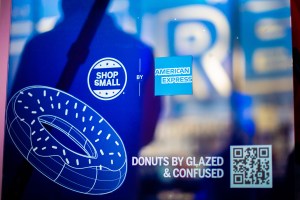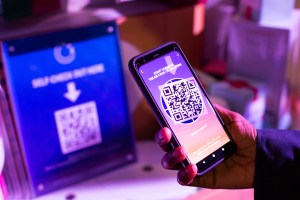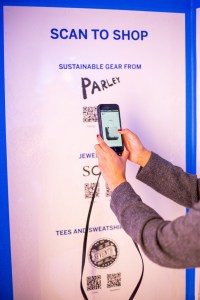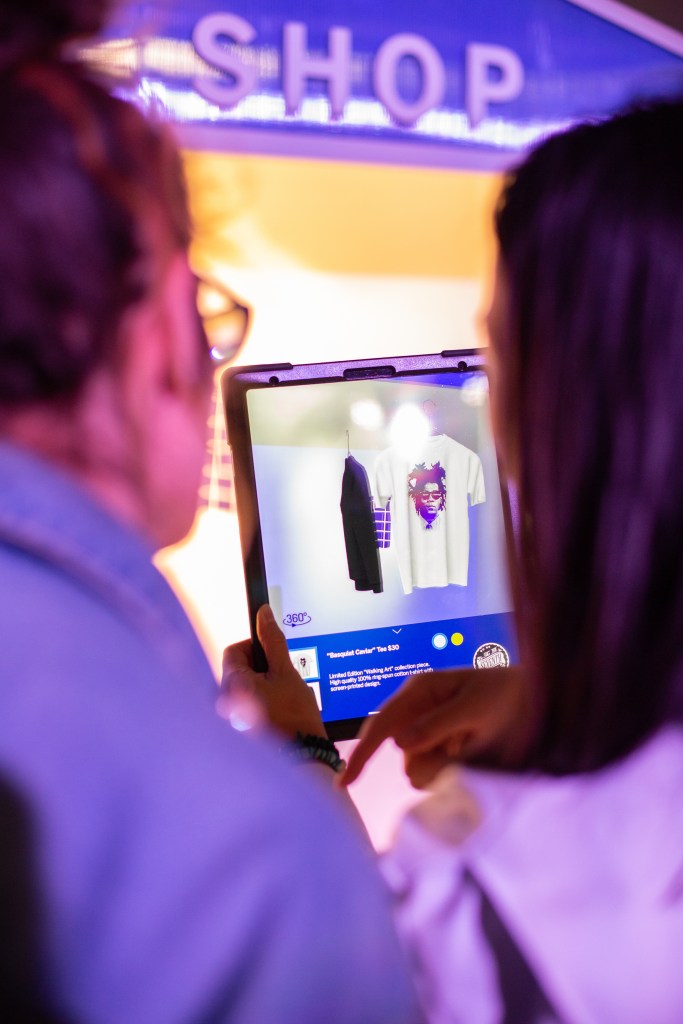The 5 Biggest & Unexpected Adjustments Coming to Experiential
“Post-pandemic, 81% of brands believe their event and experiential budgets will match or exceed their pre-outbreak levels”

The 5 Biggest & Unexpected Adjustments Coming to Experiential

Written by: Jennifer Stuart, Event Consultant, Experiential, Social and OOH Marketing Expert. Contact: JenStuart@meyerhudson.com
Businesses and consumers alike have shifted at lightning speed to survive through virtual connections in the time of Covid. Although the experiential and live event opportunities in the past 20 months have been limited up until now, that’s about to change. And radically. We’re entering into NEW Roaring 20’s. “Post-pandemic, 81% of brands believe their event and experiential budgets will match or exceed their pre-outbreak levels”.[1] Here’s the thing, we’re not operating in 2019 logistics. And we’re definitely no longer impeded by costly tech that only the biggest brands could afford. A lot has changed. Buckle up, and let’s go over the 5 biggest and unexpected adjustments that are coming to Experiential in 2022.
 PPE is here to stay, but the VAX is the Yellow Brick Road to recovery
PPE is here to stay, but the VAX is the Yellow Brick Road to recovery
Masks, sanitizer stations, rapid testing & social distancing have all become common place in event planning where in-person engagement is the crux of the campaign. Consumers are for the most part complying, but it’s not the ideal experience brands want the end user to go through. It’s cumbersome on operations, costly for the additional services it brings into a project, and mostly a frustrating but necessary step that must be taken to activate the program. With the new FDA approval for children 5-11[2], 2022 live experiences can more easily transition to requiring vaccinations or proof of a negative Covid-test to ensure the most engageable opportunity for guests to enjoy. It also will limit the liability hurdles Covid exposure brings to operating a live event. Trade shows and conferences will benefit the most, as their success is so closely tied to the proximity to others while indoors, along with the level of engagement and facetime needed. This shift is going to take hold by the fall of 2022.
First Industry to Close, but the Flood Gates are now open
As other industries have reopened and gotten back to business as “new” usual (or never even stalled during the pandemic), the Events and Experiential industry did indeed suffer, all sides took a shellacking. Let’s acknowledge it. Months went by, no weddings, no trade shows, no stadiums, no concerts, no theatre, not even the funeral game had game (too soon?). Events has patiently waited on the sidelines for their shot back to game. In-person experiences and all the associated services that connect to it, from fabrication to staffing, have all suffered during this time frame. You might find that your go to vendor has unfortunately closed shop, repurposed their pipe and drape for vaccine sites, the list is endless. It’s no surprise the cost of materials from 2 years ago is different than it is now. Remember when there was a Helium shortage about 7 years ago? How it was kind of funny but stressful if you needed helium for your events? Now translate that across many more elements that go into producing an experience. The vehicles you are used to renting, are no longer housed where they used to be. The estimates from 2 years ago that you’ve kept in your back pocket likely no longer apply. Take the time NOW to reach out to your previous vendors, service providers, producers, or internal teams, and have them do the RFP’s now for 2022. Supply chain issues affect this industry as it’s affecting all others. Most importantly the workforce. Be prepared that Proposals and RFP’s that used to be answered in a quick turn-around may now take a little longer to complete. Agencies and service providers are now ramping back up their workforce to provide for their clients, while also reinvigorating the supply chain. This doesn’t happen overnight. By the fall of 2022, you’ll start to see the B2B and B2C events overlap more than ever before. Expect to see this trend for the next 2 years. We’ll all need to work through extending timelines for deliverables, price changes, and supply hurdles. We’re in this together and with a little bit more planning and budget finesse, we’ll make it through with flying colors.
 QR Codes never say die!
QR Codes never say die!
IYKYK (thanks Goonies), prior to the pandemic QR codes were struggling in the market place. It had survived the cost issue (they’re now inexpensive to generate), made it through the backend and coding generating processes (now easily procurable), but the biggest hurdle was always user opt-in as a standard practice. Users were slow to adopt this, smart phones made it easier, but consumers were just leaning into apps far faster than a QR code driving the connection. Ironically, the “do not touch” approach the virus created, aligned and accelerated the need to use frictionless technology. American Express’ The Big Future of Shopping Small[3] pop-up shop in late 2019 highlighted the trends of what the retail industry would look like 10 years into future. Amex got it right, aside from 1 thing. It didn’t take ten years. It took 1 year and a pandemic, who knew! The small indy coffee shop to the biggest retailers have all incorporated some form of frictionless tech. Consumers got a crash course, and they’re not letting it go, take advantage of it! The amount of backend data analytics it can provide can be a huge bonus to the future strategy of your brand too.

Hyper Local & Hyper Excitable
Folks have been holed up in a very hyper local environment for some time now. Consider working them back into the fold with smaller market engagements. Mobile tours and traveling campaigns will be a great way to dip the consumers toes back into live experiences. We’ll get them back to the big 60k+ attendance events soon enough, but there are those that need to remember what it feels like to be around a lot of people. Yeah, it’s a thing. “One way to handle it is through graded exposure.” Dr. Anand says. “It’s a way in which a person slowly exposes themselves to the thing they’ve been avoiding”[4]. If you go the route of larger scale, consider adding de-sensitizing or chill spaces for those who might feel the squeeze and give them a moment to recharge themselves. On the flip side there are plenty of consumers who have pent up energy and will travel far and wide to get back to a larger scale event with their friends and family. No one wants what happened at Travis Scott’s AstroWorld to happen at their event. Crowd control is necessary now more than ever. Once you get enough people in one space and it starts to get out of control, it’s very hard to get that genie in a bottle. You compound that these folks have almost 2 years of virtual burn out, it’s a recipe for mob mentality. Aerial cameras and drones will become standard usage by Security teams to ensure the safest in person events possible, and to see the problems and squash them before they happen. In addition, foot traffic sensors will also be a requirement to ensure capacity and fire codes are being adhered to. These sensors will assist in crowd control issues before they get out of control. Trust us here, your insurance partner will thank you for it.
Eco-Conscious, Diversity and Philanthropy have a seat at the table

These event components were being included before the pandemic but they’ve now moved their way into the standard planning and inclusion in the industry. Consumers will be the first to blast your brand on social media for being out of the loop on progressive business practices. Repurposing fabrications, tracking non-reusable or recycle-able material is required by many large Fortune 500 companies. This trend will continue to grow as a sustainable experience becomes the norm not the exception.
Diversity and consideration. Staffing programs with brand ambassadors can be one of the most challenging parts of an event because its human capital. They represent your brand. You expect a high performance from them and with proper training they deliver. They’re gig workers, students, part timers, who want to provide solid work but also get paid for doing it. Be prompt with compensation. Everyone’s been squeezed and money matters. The days of cherry picking a type of brand ambassador solely based on their age, gender, etc. has expired though. That’s so 2010. Labor departments have been actively enforcing laws for equity, inclusion and diversity in the contract work force, no longer just for full time employees. Be careful of posting a job specifying the “look” or “type”, and don’t be surprised if someone who never even applied to your brand ambassador project has filed a complaint with the labor department on your org for those non-inclusionary reasons.
Partnering with a philanthropic organization has been done for years and many large corps even have their own arm now within their corporate umbrella. The partnership is a valuable piece of an onsite experience and there are so many different ways of creating that bridge for your event if you haven’t yet established a standard practice of doing so. It could be donating left over food from your Branded Food Truck to the local food pantry, or that box of unused uniforms? Donate it to the local shelter. The options can be big or small, but the sentiment is not lost on the consumer, and they’re taking note.
Try Something new!
So, we’ve addressed the unexpected adjustments that have come, but there is an amazing silver lining to the industry being stymied then kickstarted again. Talent has moved around, vendors and service providers have pivoted and created new offerings and strengths. Reach out and connect with companies who you haven’t had communication with in years. Connect to new businesses that have risen out of the Covid ashes, and give them a shot! You will find that so many of your trusted partners are still out there, just in a new look or at a new company. Reconnect. Same goes for the business development side of experiential. Companies who did not have the budgets or tended to revert to more traditional advertising may be primed to give experiential a go. – JS
[1] EventTrack 2021 https://www.paperpicks.com/eventtrack-2021-the-event-experiential-marketing-industry-forecast-best-practices-study/
[2] https://www.fda.gov/news-events/press-announcements/fda-authorizes-pfizer-biontech-covid-19-vaccine-emergency-use-children-5-through-11-years-age
[3] https://www.adweek.com/brand-marketing/for-10th-small-business-saturday-american-express-opens-ar-experience-in-retail-tech/
[4] https://health.clevelandclinic.org/how-to-tell-the-difference-between-agoraphobia-and-coronavirus-anxiety/
 Help us Help You by keeping the only Independent Voice for OOH.
Help us Help You by keeping the only Independent Voice for OOH.
Billboards and Out of Home. Please subscribe it’s still free. ⇒Subscribe to OOH Today






